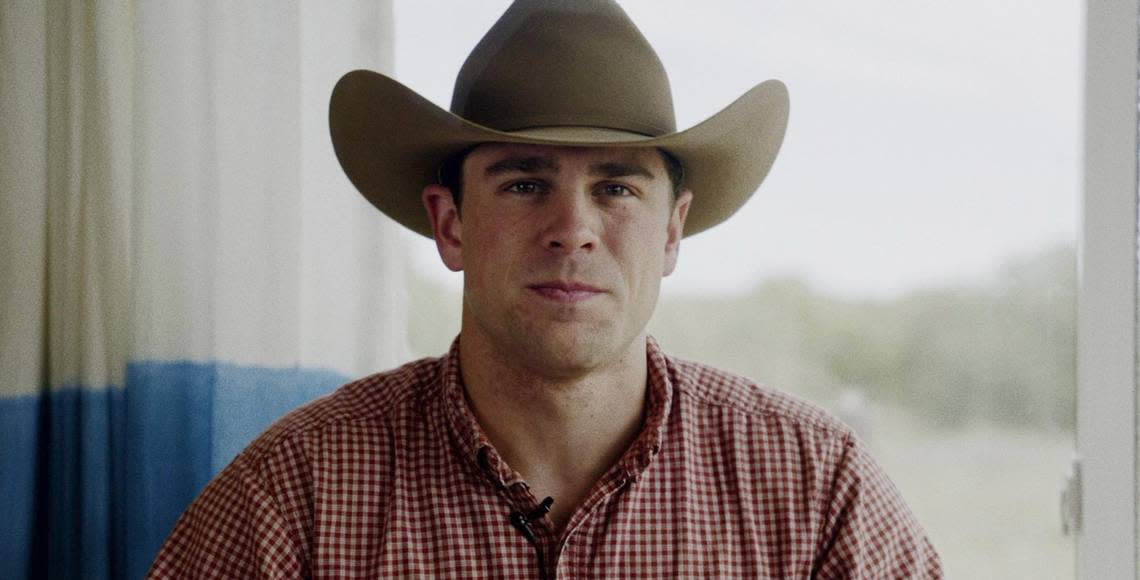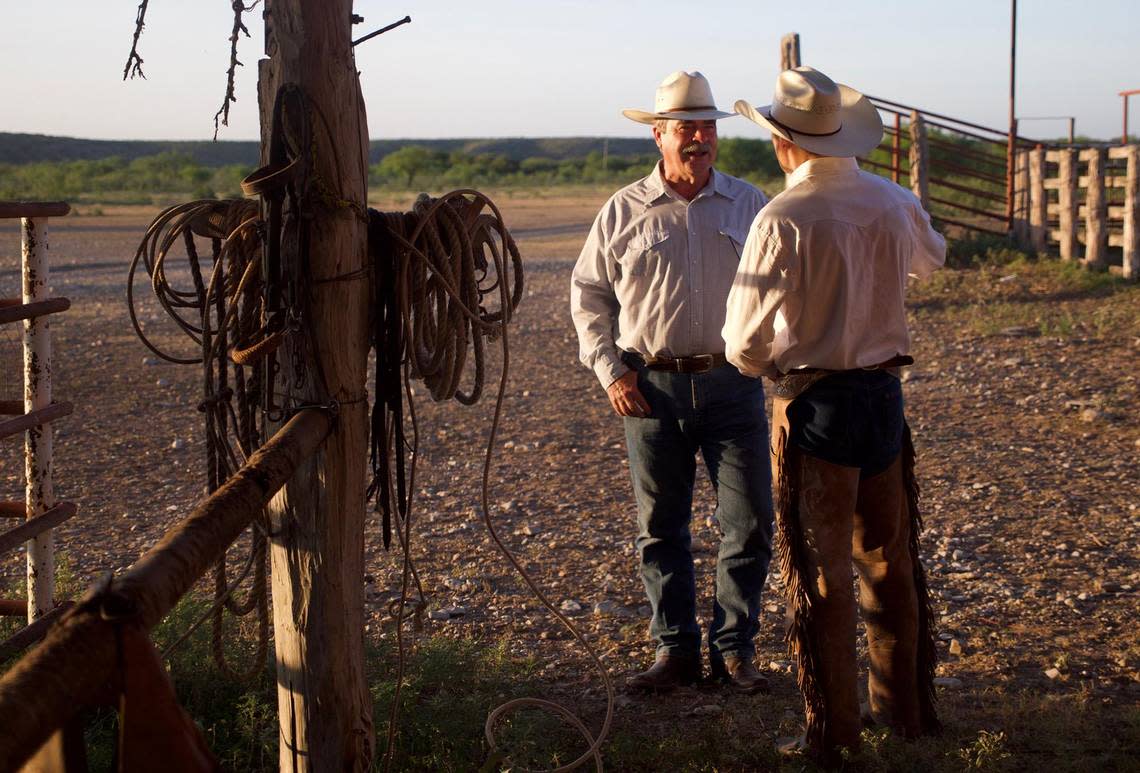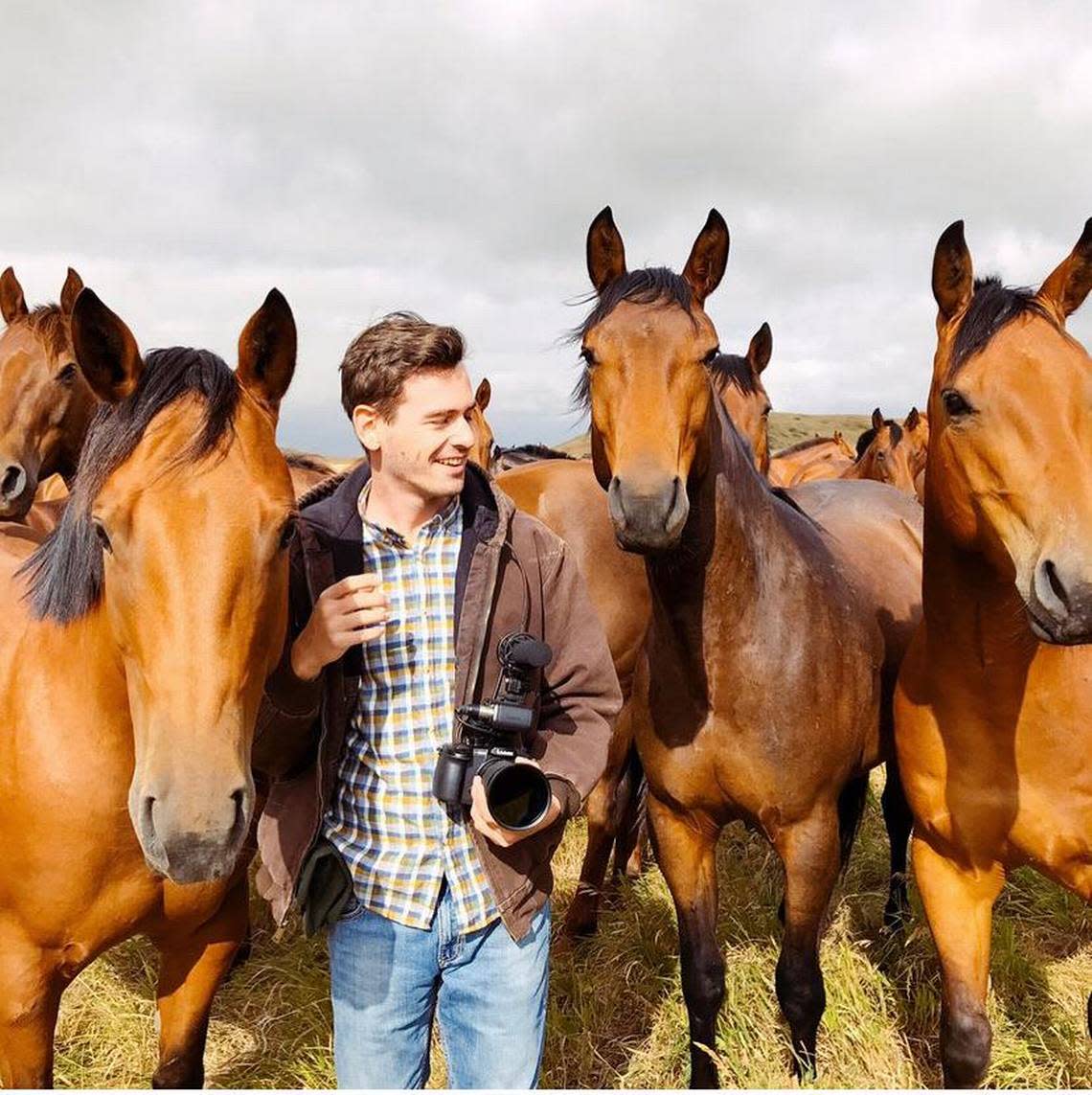He grew up hearing cowboy stories. Now a Fort Worth man’s own cowboy story is streaming
Gastón Davis’ desire to experience the authentic cowboy lifestyle for himself led him on a journey that spanned six countries and two continents.
Now the product of the Fort Worth resident’s quest, the indie film “Cowboys Without Borders,” is available on Amazon, Apple TV, YouTube and other streaming services.
The film, which Davis described as “a passion project,” is a documentary of the men and women who work behind the scenes in the agriculture industry, individuals whom Davis said often go unnoticed.
Davis is no stranger to ranch life. His ancestors, immigrants from Germany, acquired the family’s Pecan Spring Ranch near Menard, Texas, in 1880. Johanna Wilhelm, the “Sheep Queen of Texas,” was his great-great-great-grandmother.
Davis himself grew up in Houston, but spent his summers helping his grandfather on the Dry Creek Ranch near Pecan Spring.
“He would tell me stories of working with [his] Grandpa Fritz, and I would just love to hear ‘em ... working on horseback, working ... thousands of head of cattle and all of a sudden I realized, you know, that’s really cool but I don’t really have any stories like that to pull from personally,” Davis said.
Nowadays cattle operations are often done from the back of a pickup, and Davis wondered if he’d missed out on the cowboy era. His summer experiences left him hungry for more.

Through some contacts he met while interning at the department of agriculture his senior year of college, he got connected with a rancher in Paraguay.
In June 2016, shortly after graduating with a film degree from the University of Texas at Austin, Davis boarded a plane to Paraguay with two objectives in mind: learn Spanish and experience life on a South American ranch.
The cowboy way
The rancher met Davis in the capital city of Asunción and brought him to his ranch, Estancia Faro Norte, in the northern part of the country. To Davis’ surprise, the man dropped him off, told the foreman something about him in Spanish and drove away.
“For six weeks I didn’t see him,” Davis said. “And I was just on this ranch, and they gave me like a little room with a bed and I would just have meals with everyone and I was just totally immersed in the language.”
Estancia Faro Norte was only the beginning of Davis’ South American adventure.
“The more people I met and friends I made on the journey, the more ranchers would invite me to work for them,” he said.

For the next six months Davis worked on 12 ranches in Paraguay, Uruguay, Argentina and Chile, and during that time he had an epiphany.
“I was able to see that there’s not just cowboys in Texas, not just in Montana or wherever [in the] United States, they’re everywhere,” Davis said. “This culture, it truly does transcend borders and the people in it are ... all the same sense of humility and gentleness.”
That realization gave Davis an idea for how he could bridge the gap between his rural and urban life, and the concept for “Cowboys Without Borders” was born.
Pumping a heartbeat into rural America
When he got back from South America, he reached out to Ilissa Nolan, a ninth-generation Texan from a ranching family, and told her about his idea for a documentary.
Nolan said the idea intrigued her and she agreed to come on board as the producer. She came up with the title and helped Davis refine the concept. They contacted a cinematographer, Alex Walker, and developed a game plan of which ranches should be part of their story.
Nolan said it was important to her that the story be as accurate as possible.
“Coming from the ag industry, I really wanted to showcase what I know of the industry,” Nolan said. “And it was really important for me to have ... advocates of the ag industry and also farmers and ranchers watch this and say, ‘Thank you for portraying our lifestyle and our culture in a way that we can appreciate.’”
For most of August 2017, Davis and the filming crew followed cowboys on four ranches in Montana, Texas, Mexico and Argentina.

Davis worked alongside the cowboys, known as vaqueros in Mexico and gauchos in Argentina. He helped tame wild horses and sorted cattle. He ate meals with the cowboys and their families and asked lots of questions, gradually seeing each ranch’s story take shape.
He spent 18 months editing 80 hours of footage on his laptop in Final Cut Pro, watching and re-watching it to find the best information.
The film made its debut July 12 on streaming platforms. It’s also available in DVD format.
Davis said the relationships he built were the most fulfilling part of the film-making journey, which took nearly five and a half years from first idea to finished product.
“Making it ... means meeting so many different people, different walks of life in the ag industry but also in California, in the music industry, in the cinematography industry,” Davis said. “All these different industries come together to make a film. and that’s what’s really exciting to me.”
The film also helped bring Davis and his wife, Kathryn, together.
Kathryn Davis saw the promotional video when the film was still in the fundraising stage. When she saw Gastón Davis at a farmers market some time later, she recognized him as “the guy from the movie” and the two started talking. They married in February 2021.
“He was my celebrity crush,” she said laughing.

Kathryn Davis is now the marketing director for the film.
Nolan said she knows from the feedback she’s gotten from family and friends that the film stayed true to the intent of accurately portraying the people in the agriculture industry.
“Every one of them has said the same thing, which is, ‘That’s exactly what it’s like, you know, you’ve really told the true story of the cowboy and our lifestyle,’” Nolan said. “... And so that’s been probably the most flattering compliment.”
Davis currently works at a steel building materials company in Fort Worth, but he hopes to keep making films focused on “pumping a heartbeat back into rural America.”
“If rural America goes away, that’s the backbone of America,” Davis said. “That’s what, I think, what we’re built on.”


